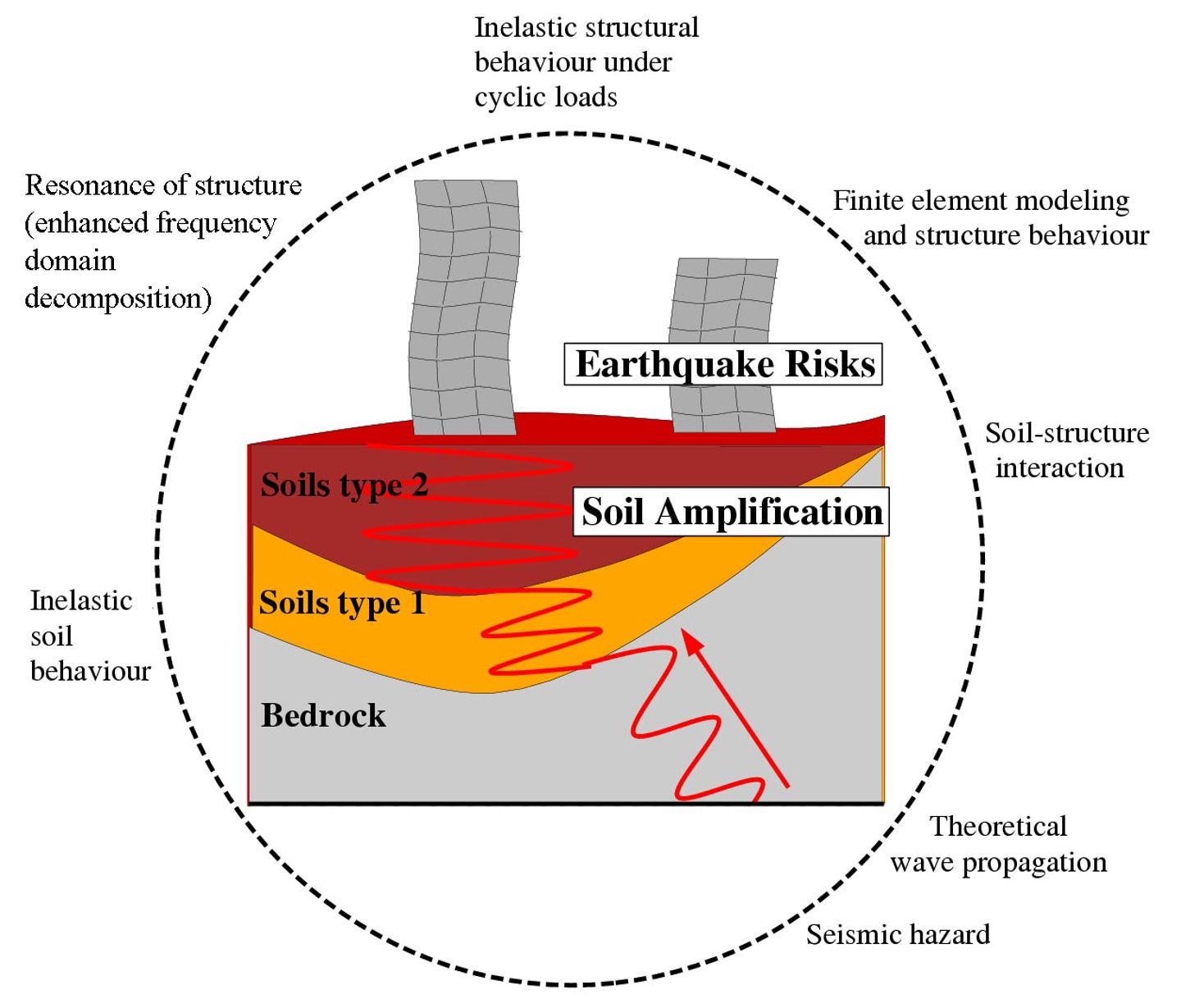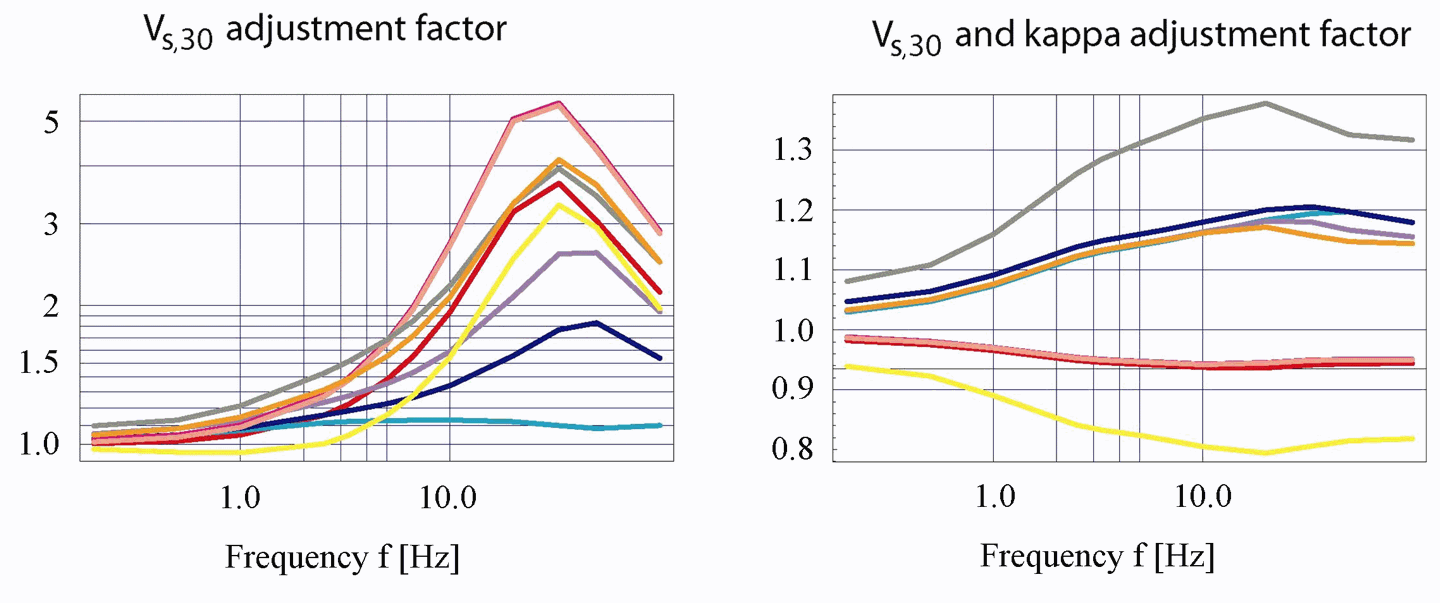Earthquake hazard and site amplification
Many fast-growing cities today are located on old lake beds and landfills with strong soil amplification potentials. The shaking contribution of these factors is essential to research targets.
Figure 3 below attempts to synthesize the overall earthquake vulnerability problem and some topics addressed in this project.

Figure 3. Sketch of some of the topics (inside the hatched circle) that are addressed in this project, while the neighboring research areas (outside the circle) are covered only more briefly.
NORSAR has dealt with earthquake hazard-related problems for more than 30 years, both on the research side and as a partner for the construction industry. The efforts have partly been within earthquake hazard methodology, in particular probabilistic methods, but also to develop the underlying knowledge needed to perform sufficiently reliable analyses, concentrating on the following topics:
- earthquake hazard methodologies
- seismotectonic and earthquake source models
- ground-motion models (wave attenuation)
- site response (soil amplification)
Since the first two of these topics have been thoroughly covered in earlier works, the efforts within ICG Project 3 have been focused to some extent on the third topic but even more on the last one, as it will be shown in the subsequent sections. Figure 4 illustrates some results from a study aimed at developing criteria for selecting and adjusting ground-motion models for specific target regions.

It can be seen that the effect on the spectrum of the near-surface geology may be considerable, demonstrating the importance of detailed soil response and site characterization efforts.
Contact
Hilmar Bungum, Norsar